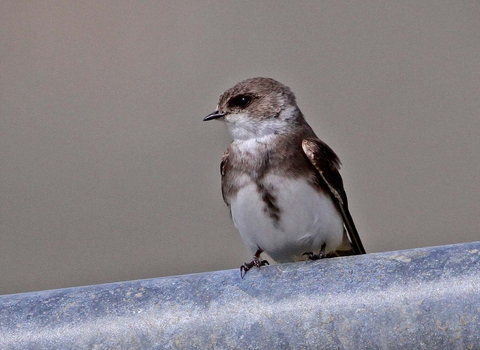
©Margaret Holland
Sand martin
Scientific name
Riparia ripariaWhen to see
March to OctoberSpecies information
Statistics
Length: 12cmWingspan: 28cm
Weight: 14g
Average lifespan: 2 years
Habitats
About
The sand martin is a common summer visitor to the UK, arriving in March and leaving in October. It nests in colonies, digging burrows in steep, sandy cliffs, usually around water, and is commonly found on wetland sites. The tunnels it bores can be up to a metre in length! At a chamber at the end of the burrow, four or five eggs are laid on collected straw and feathers. Sand martins are sociable birds and will nest together in summer and gather to roost in large numbers in autumn; eventually they migrate to Africa to spend the winter.How to identify
Our smallest swallow, the sand martin is brown above and white below, with a brown band across its breast and a short, forked tail.Distribution
Widespread.In our area
Sand Martins can be seen in their hundreds at Wood Lane Nature Reserve, near Ellesmere. They dig their burrows into the sand banks created at the working quarry. The site is perfect for this species as they also require wetland nearby. Sand Martins start arriving in March, check our latest sightings to see if they have been spotted.
Did you know?
In North America, the sand martin is known as the 'bank swallow' because of its nesting habits. Its Latin name also means 'bank'. In India, it is known as the 'collared sand martin'.Watch
Sand Martin (https://vimeo.com/452225000)
Sand Martin by John Bridges
Sand Martins can be seen in their hundreds at Wood Lane Nature Reserve, near Ellesmere. They dig their burrows into the sand banks created at the working quarry. The site is perfect for this species as they also require wetland nearby. Sand Martins start arriving in March, check our latest sightings to see if they have been spotted.

